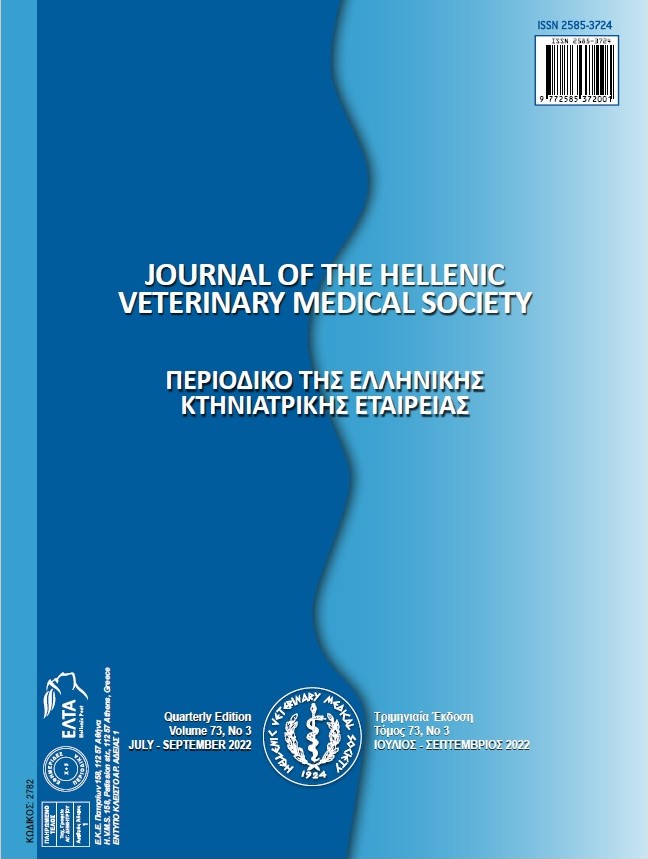Oxidant/Antioxidant Status and Certain Trace Elements Relationship in Hair Goats Naturally Infected by Neospora caninum

Resumen
This study was performed to determine the prevalence of Neospora caninum in female hair goats raised in different locations of the Siirt province of Turkey, and to investigate the total antioxidant status (TAS), total oxidant status (TOS), Zinc (Zn), and Copper (Cu) levels of the infected goats. The animal material of the study consists of a total of 184 female hair goats that are between 1 to 6 years old with the random sampling method. Investigation of the N.caninum antibodies was then performed using a commercial ELISA kit. The results of the ELISA tests reveal that the prevalence of N. caninum in the province of Siirt was 10.33% (19/184) positive, 7.61% (14/184) suspected, and 82.07% (151/184) negative. According to the ELISA test results, 10 seropositive and 10 seronegative sera samples were used in the TAS, TOS, Zn, and Cu analysis. The TAS (p<0.01) and Zn (p<0.001) levels of goats positive with N. caninum were found to be lower compared to those of the seronegative goats, while their TOS and Cu levels were higher (p<0.05). This study was the first to determine the N.caninum prevalence in the goats raised in the province of Siirt. It was concluded that it would be beneficial to take precautionary measures, as well as further studies with larger scopes to be performed which should also involve dogs as the final hosts. Furthermore, the oxidative stress parameters (TAS, TOS) and certain trace elements (Zn, Cu) were found to be affected by the Neosporosis, which should be useful in the diagnosis and treatment of the disease.
Article Details
- Cómo citar
-
Çelik, B., Çelik, ÖY, İrak, K., & Bolacalı, M. (2023). Oxidant/Antioxidant Status and Certain Trace Elements Relationship in Hair Goats Naturally Infected by Neospora caninum. Journal of the Hellenic Veterinary Medical Society, 73(3), 4417–4424. https://doi.org/10.12681/jhvms.27283 (Original work published 9 de noviembre de 2022)
- Número
- Vol. 73 Núm. 3 (2022)
- Sección
- Research Articles

Esta obra está bajo una licencia internacional Creative Commons Atribución-NoComercial 4.0.
Authors who publish with this journal agree to the following terms:
· Authors retain copyright and grant the journal right of first publication with the work simultaneously licensed under a Creative Commons Attribution Non-Commercial License that allows others to share the work with an acknowledgement of the work's authorship and initial publication in this journal.
· Authors are able to enter into separate, additional contractual arrangements for the non-exclusive distribution of the journal's published version of the work (e.g. post it to an institutional repository or publish it in a book), with an acknowledgement of its initial publication in this journal.
· Authors are permitted and encouraged to post their work online (preferably in institutional repositories or on their website) prior to and during the submission process, as it can lead to productive exchanges, as well as earlier and greater citation of published work.


